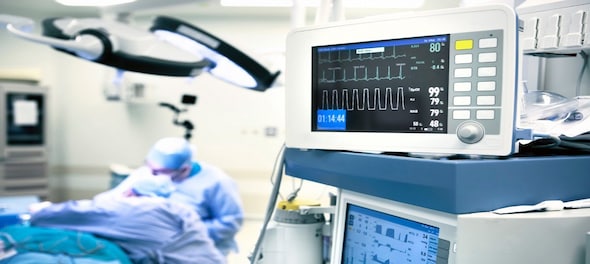
For decades India experienced stellar economic growth that was accompanied by significant improvements in health outcomes: life expectancy at birth increased to 70 years in 2020, from 48 years in 1970. One can witness similar improvements in maternal and infant mortality rates.
India boasts of a government-funded, three-tiered public health system that delivers health services; the government must be lauded for several policy initiatives that have been instrumental in improving access and delivery of healthcare to the masses. Some of these initiatives are the prioritisation of digital platforms in healthcare delivery, expanding the scope and spread of the Ayushman Bharat scheme, alongside managing what will surely be remembered as one of the worst health crises in the history of mankind. The need is to devise a national agenda around preventive health, testing, and screening as these are key to reducing the overall disease burden in India.
The government has also taken several measures to improve healthcare infrastructure across India through various schemes such as National Health Mission and Jan Aushadhi to provide access to underprivileged and vulnerable families.
Also Read:
As of 31st March 2022, a total of 17.9 crore individuals were provided with Ayushman cards. Under Ayushman Bharat Health Infrastructure Mission, the government aims to offer a high-class testing network for the effective diagnosis and monitoring of diseases. It has already taken the first crucial steps in this regard in the form of the announcement of the launch of Integrated Public Health labs across 730 districts and Block Public Health Units across 3000 centers in the country. These centers will have facilities for the early detection of diseases and offer free medical consultations, tests, and medicines. All these measures will go a long way in decreasing the burden of non-communicable diseases (NCDs) and infectious diseases (IDs).
While the above-mentioned initiatives are definitely steps in the right direction, India needs to ensure equitable access to healthcare by building a more reliable and responsive healthcare infrastructure keeping in mind the over 1.40 billion population of the nation which will soon surpass China’s. The Lancet Commission on Diagnostics report of 2021 estimates that nearly half of the global population lacks access to basic diagnostics for many common diseases, hence. it is important to focus on making primary and advanced diagnostics more accessible to all.
India critically needs to introduce population screening programs under the Ayushman Bharat scheme for the management of infectious diseases like HIV, Hepatitis and HPV. This can be accomplished through a framework of centralised and decentralised, hospital-based, and mobile site testing infrastructure comprising near-patient testing, self-tests, drive-through centers, and sample collection via community health workers, among others. While the PM has committed to ending TB by 2025, we may need to scale up testing infrastructure and framework to meet this goal, especially diagnosing patients with co-infections and drug resistance while enabling program expansion to test missing patients. It is worth remembering that India was testing over 1 lakh samples at the height of the pandemic during 2020-21.
One must appreciate states like Delhi and Maharashtra that have introduced community-level healthcare interventions through the mohalla clinics. Maharashtra launched the first set of 52 Hinduhridayasamrat Balasaheb Thackeray (HBT) health centers in Mumbai in November 2022, while the Delhi government has committed to providing 450 types of medical tests free of cost this year onwards via its mohalla clinic network. Implementation of effective screening tools not only enables the efficient use of scarce resources but also supports cost-effectiveness (e.g. in heart failure and heart attack diagnosis) by ensuring early detection and the timely initiation of treatment. Moreover, introducing population screening for infectious diseases will facilitate future-proofing of the health system.
It is imperative to bring in private players with expertise and high-quality standards via PPPs to deliver healthcare to the masses – be it in urban centers or in tier III, or tier IV cities. Of course, one cannot deny the policy initiatives that have made the PPPs successful – the formation of a PPP review committee has not only expedited project evaluations and approvals but also enhanced transparency. India has served as a model to the world for its handling of the pandemic – be it the use of the digital platform to trace, track, and test the pandemic or provide vaccination coverage to over 2,20,17,06,017 citizens; roll-out of e-sanjeevani tele consultation services; the launch of the PLI scheme to reduce dependence on Chinese imports for pharmaceutical raw material; as well as India’s development of the indigenous vaccine for COVID.
We must work with the same momentum to not only future-proof India from other pandemic eruptions but also put into place the necessary mechanisms for tackling the growing burden of NCDs and IDs to guarantee a healthy and productive nation.
—The author, Narendra Varde, is Managing Director, Roche Diagnostics India and Neighbouring Markets. The views expressed are personal.
(Edited by : C H Unnikrishnan)
First Published: Jan 23, 2023 10:49 AM IST
Check out our in-depth Market Coverage, Business News & get real-time Stock Market Updates on CNBC-TV18. Also, Watch our channels CNBC-TV18, CNBC Awaaz and CNBC Bajar Live on-the-go!


In Ayodhya, voters talk of a promise fulfilled and yearning for development
May 17, 2024 2:10 PM
Fight of heavyweights in Sambalpur where farmers, weavers hold the key
May 17, 2024 12:25 PM
Odisha: Fight of heavyweights in Sambalpur where farmers, weavers hold the key
May 17, 2024 10:22 AM
Lok Sabha Election 2024: What rural Delhi wants
May 16, 2024 10:10 PM

